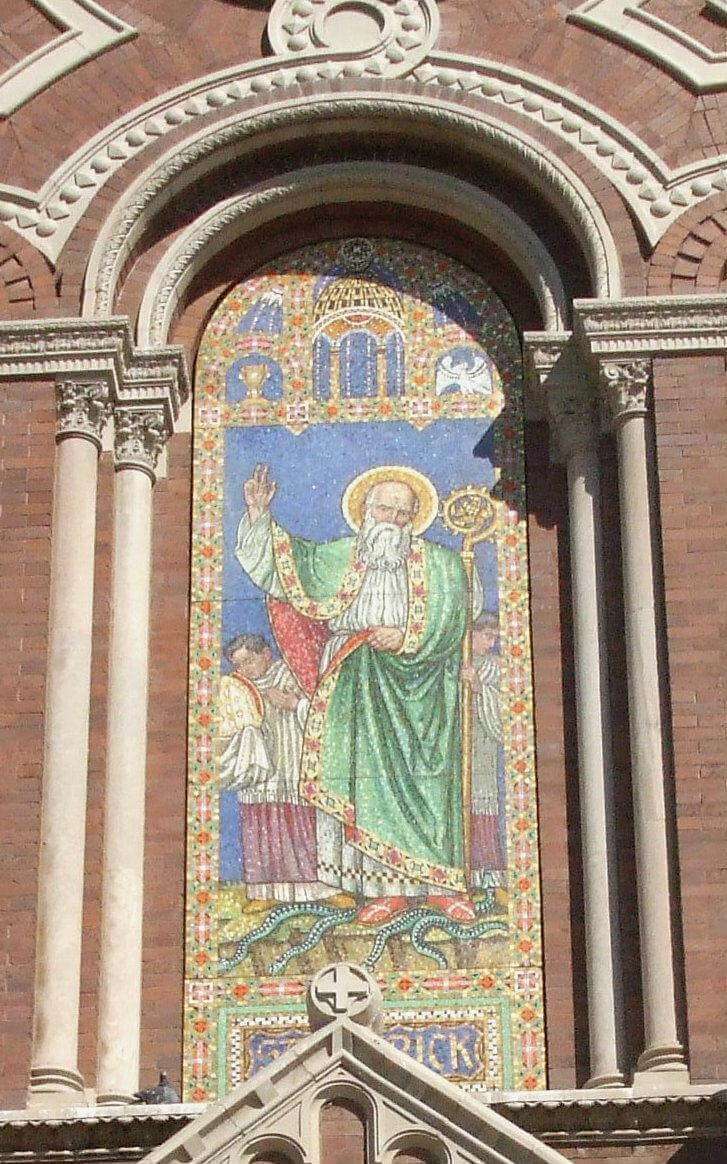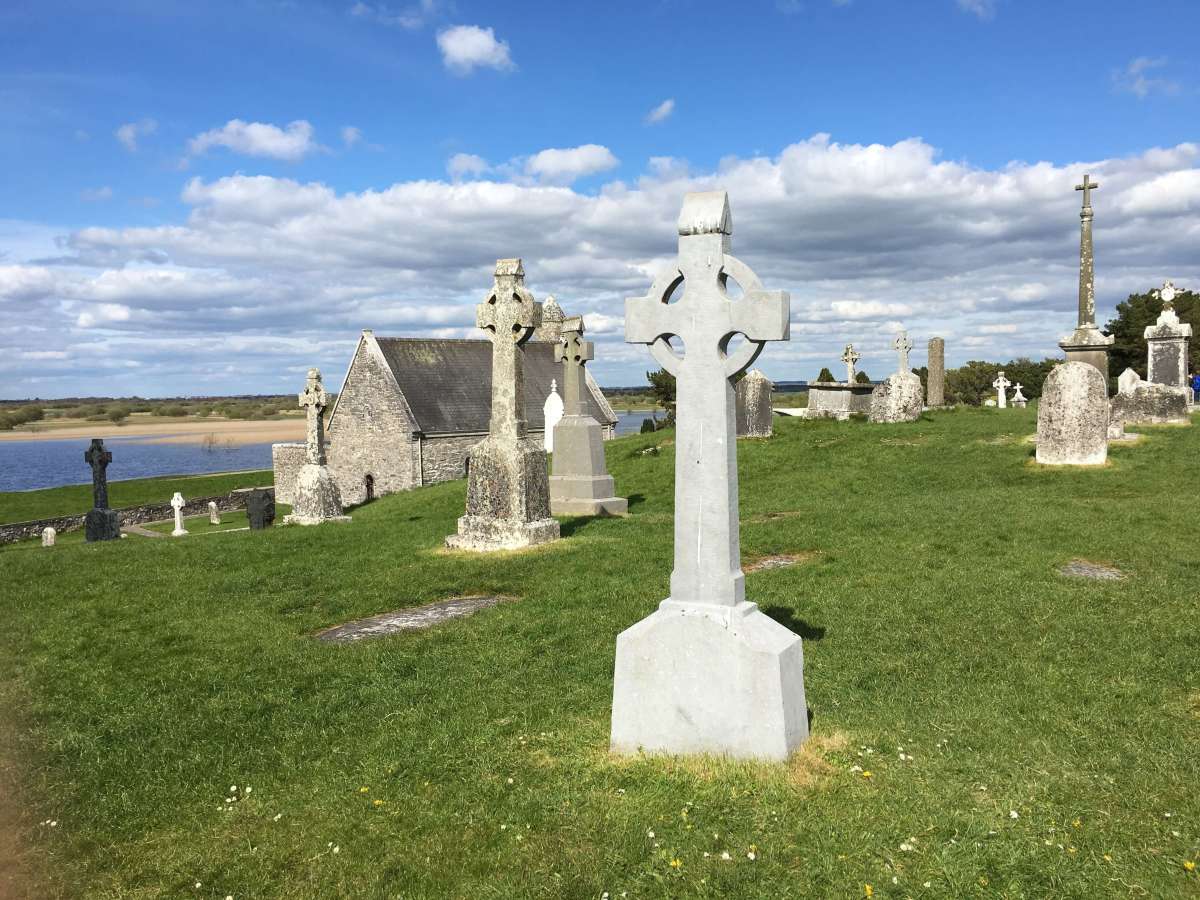Why Do We Celebrate St. Patrick?

As you probably know, St. Patrick's Day is March 17, and every year, Irish and not-so-Irish people alike celebrate with food, drinks, and fun. But who was St. Patrick, and why do we celebrate him every March? Here's an in-depth look at the saint behind the holiday and the reasons why he remains so popular today.
Early Life
St. Patrick is the patron saint of Ireland, but did you know that he wasn't even born in Ireland? He was born in Great Britain to Roman parents when Britain was part of the Roman Empire, sometime in the late fourth century CE. When he was 16 years old, St. Patrick was taken captive by Irish pirates and became the slave of a Druid priest in Ireland, where he spent six years working as a shepherd. It was during this time in captivity when Patrick's Christian faith developed and deepened. One night, he heard a voice in a dream that told him that the ship that would lead to his escape was ready. Attributing that voice to God, Patrick fled his captors and secured passage on a ship, which returned him home to his family in Britain.Return to Ireland
After his return to Great Britain, Patrick had another dream. In this dream, a figure called Victorius delivered him a letter addressed to "The Voice of the Irish" and began to realize his calling of spreading Christianity to Ireland. Patrick first traveled to Auxerre, France, to begin his studies and enter the priesthood under the missionary St. Germain. After over 15 years of study, Patrick was consecrated Bishop of the Irish ca. 431 CE by Pope Celestine I and was sent to Ireland to spread the Gospel.
St. Patrick is credited with creating the Celtic cross, today an iconic symbol of Christianity in Ireland. Photo Source: Colleen Hughes
As a missionary in Ireland, Patrick performed baptisms, celebrated the Eucharist, ordained priests, and instituted orders of nuns and monks. Additionally, perhaps because of his familiarity with the Irish language and culture, Patrick often sought to incorporate traditional Irish pagan beliefs and rituals into his teachings on Christianity rather than trying to completely change them. For example, he celebrated Easter through the use of bonfires because the Irish were already accustomed to honoring their gods with fire.
In perhaps his most famous example of incorporating native Irish beliefs with Christian practices, Patrick combined the Irish pagan symbol of the sun with the Christian symbol of the cross, creating what is today known as the Celtic cross, an iconic symbol of Ireland and Irish faith.
Legends of St. Patrick
Much of what you've heard about St. Patrick can probably be chalked up to good old Irish storytelling. Legends of St. Patrick's life and teachings abound and often intermix with the truthful parts of his life story. Have you ever heard that St. Patrick drove all the snakes out of Ireland? While it is true that Ireland is one of the few places on Earth without native snakes (others being New Zealand, Iceland, Greenland, and Antarctica), it is highly unlikely that St. Patrick is responsible for ridding the island of its reptiles. According to the legend, St. Patrick was undergoing a 40-day fast on top of a hill when snakes began attacking him, and St. Patrick successfully chased them all into the sea. Despite fossil records showing that there likely never were snakes in Ireland to begin with, this popular story of St. Patrick persists.
A popular legend has it that St. Patrick used the shamrock's three leaves to explain the Christian Holy Trinity. Photo Source: Pixaby/jeonsango
What is likely the most famous legend of St. Patrick, however, is the story that he explained the concept of the Christian Trinity through the Irish shamrock. Much as the shamrock is made up of three leaves, as do the Father, Son, and Holy Spirit make up the singular Christian God, he allegedly explained to the Irish pagans. Even though this story likely never happened, the shamrock metaphor remains strong in Irish Christianity, and St. Patrick is often depicted holding a shamrock.
Why March 17?
Although the exact dates of his birth and death are uncertain, some scholars believe St. Patrick died on March 17, ca. 460 CE, and this is why we celebrate his feast day each year on March 17. St. Patrick died in the townland of Saul and is buried in nearby Downpatrick, in County Down. St. Patrick was never formally canonized by a pope, but he was declared a Saint in Heaven by many Catholic churches. Today, St. Patrick's Day is celebrated in Ireland and around the world as both a holy day and as a secular celebration of Irish heritage and culture.
Featured Photo Source: Wikimedia Commons/Lyricmac

